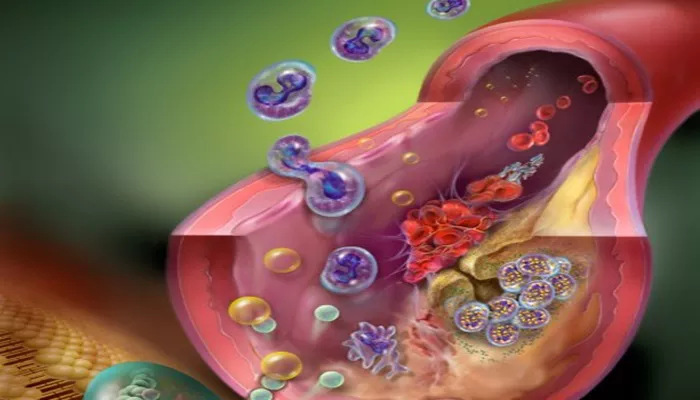Hyperlipidemia, a condition characterized by elevated levels of lipids in the blood, is a significant risk factor for cardiovascular diseases. Managing and reducing hyperlipidemia is crucial for maintaining heart health and overall well-being. This article outlines the seven best ways to reduce hyperlipidemia, offering practical tips and lifestyle changes to help you manage this condition effectively.
1. Adopt A Heart-Healthy Diet
Diet plays a pivotal role in managing hyperlipidemia. By adopting a heart-healthy diet, you can significantly reduce your lipid levels.
Focus on Whole Foods
Whole foods, such as fruits, vegetables, whole grains, and lean proteins, should form the cornerstone of your diet. These foods are rich in essential nutrients and fiber, which help in lowering cholesterol levels.
Include Healthy Fats
Not all fats are bad. Incorporate healthy fats from sources like avocados, nuts, seeds, and olive oil. These fats can help increase HDL (good) cholesterol while reducing LDL (bad) cholesterol.
Avoid Trans Fats and Saturated Fats
Limit the intake of trans fats and saturated fats found in processed foods, fried items, and fatty cuts of meat. These fats can raise LDL cholesterol and contribute to hyperlipidemia.
SEE ALSO: How Does Nephrotic Syndrome Cause Hyperlipidemia
Increase Fiber Intake
Dietary fiber, particularly soluble fiber, helps reduce cholesterol absorption in the bloodstream. Foods high in soluble fiber include oats, barley, beans, lentils, and fruits like apples and oranges.
2. Exercise Regularly
Regular physical activity is essential for managing hyperlipidemia. Exercise helps in maintaining a healthy weight, improving cardiovascular health, and reducing lipid levels.
Aerobic Exercise
Engage in aerobic exercises such as walking, jogging, swimming, or cycling for at least 150 minutes per week. These activities help increase HDL cholesterol and lower LDL cholesterol and triglycerides.
Strength Training
Incorporate strength training exercises, like lifting weights or using resistance bands, at least two days a week. Building muscle mass can enhance your metabolism and aid in lipid management.
Consistency is Key
Consistency is crucial for reaping the benefits of exercise. Aim to incorporate physical activity into your daily routine to maintain long-term lipid control.
3. Maintain A Healthy Weight
Achieving and maintaining a healthy weight is vital for reducing hyperlipidemia. Excess body weight can contribute to elevated lipid levels and increase the risk of cardiovascular diseases.
Calculate Your BMI
Determine your Body Mass Index (BMI) to understand if you are within a healthy weight range. A BMI between 18.5 and 24.9 is considered normal.
Set Realistic Goals
Set achievable weight loss goals, focusing on losing 1-2 pounds per week. Gradual weight loss is more sustainable and beneficial for lipid management.
Monitor Your Progress
Keep track of your weight, dietary habits, and physical activity levels. Regular monitoring can help you stay motivated and make necessary adjustments to your lifestyle.
4. Limit Alcohol Consumption
Excessive alcohol consumption can negatively impact lipid levels and overall health. Moderation is key when it comes to alcohol intake.
Understand the Limits
For women, limit alcohol intake to one drink per day. For men, the limit is two drinks per day. Exceeding these limits can raise triglyceride levels and contribute to hyperlipidemia.
Choose Wisely
Opt for healthier alcoholic beverages like red wine, which contains antioxidants that can benefit heart health. However, moderation remains crucial.
Seek Support
If you struggle with limiting alcohol consumption, seek support from healthcare professionals or support groups to help manage your intake effectively.
5. Quit Smoking
Smoking has a detrimental effect on lipid levels and cardiovascular health. Quitting smoking is one of the most impactful changes you can make to reduce hyperlipidemia.
Understand the Risks
Smoking lowers HDL cholesterol and increases LDL cholesterol and triglycerides. It also damages blood vessels, increasing the risk of atherosclerosis.
Seek Help
Consider nicotine replacement therapy, medications, or counseling to assist in quitting smoking. Support from healthcare professionals can enhance your chances of success.
Stay Persistent
Quitting smoking is challenging, but persistence is key. Keep trying different methods until you find what works best for you.
6. Manage Stress
Chronic stress can negatively impact lipid levels and overall health. Implementing stress management techniques is essential for reducing hyperlipidemia.
Practice Mindfulness
Mindfulness techniques, such as meditation and deep breathing exercises, can help reduce stress and improve mental well-being.
Engage in Relaxation Activities
Incorporate relaxation activities into your routine, such as yoga, tai chi, or hobbies that bring you joy. These activities can help lower stress levels and promote heart health.
Seek Professional Help
If stress becomes overwhelming, seek support from mental health professionals. Therapy or counseling can provide effective strategies for managing stress and improving overall well-being.
7. Medications And Supplements
In some cases, lifestyle changes alone may not be sufficient to manage hyperlipidemia. Medications and supplements can play a crucial role in lipid management.
Statins
Statins are commonly prescribed medications that lower LDL cholesterol levels. They work by inhibiting the enzyme responsible for cholesterol production in the liver.
Fibrates
Fibrates are medications that primarily reduce triglyceride levels and increase HDL cholesterol. They are often used in combination with other lipid-lowering drugs.
Omega-3 Fatty Acids
Omega-3 fatty acids, found in fish oil supplements, can help lower triglyceride levels and improve overall lipid profile.
Consult with your healthcare provider before starting any supplements.
Conclusion
Reducing hyperlipidemia involves a multifaceted approach that includes dietary changes, regular exercise, weight management, moderation in alcohol consumption, smoking cessation, stress management, and, if necessary, medications and supplements. By implementing these seven strategies, you can effectively manage hyperlipidemia and reduce the risk of cardiovascular diseases. Always consult with your healthcare provider before making any significant lifestyle changes or starting new medications or supplements. Remember, consistency and persistence are key to achieving and maintaining healthy lipid levels for a healthier, longer life.

